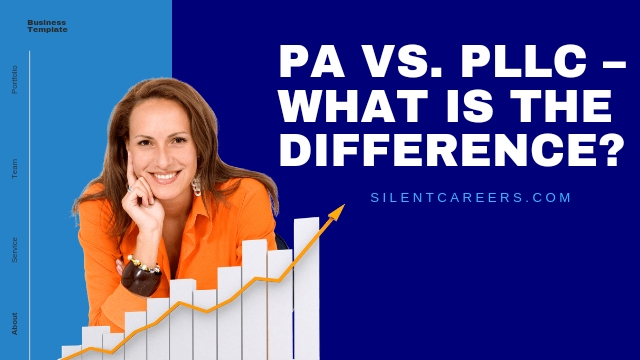

A semi detached house is a single-family home that shares one common wall with another dwelling. This type of property offers a blend of privacy and affordability, making it a popular choice for many homebuyers. Before purchasing a semi-detached house, it’s important to understand its unique characteristics, benefits, and potential drawbacks.
What is a semi detached house?
A semi-detached house is a type of residential building that shares one common wall with another house. Each home has its own separate entrance and typically features its own front and back yard. This housing style combines aspects of both detached homes and row houses, providing a balance between privacy and cost-efficiency.
Key Features of Semi-Detached Houses:
- Shared Wall:
- Semi-detached houses are built in pairs, with each home sharing one wall with the adjacent property. This shared wall is often referred to as a “party wall.”
- Separate Entrances:
- Despite sharing a wall, each home has its own separate entrance, ensuring a level of privacy for both households.
- Yard Space:
- Each semi-detached house usually has its own front and back yards, offering outdoor space for gardening, recreation, and other activities.
- Cost-Effective:
- These houses are generally more affordable than fully detached homes, as the shared wall reduces construction and land costs.
- Privacy:
- While they provide more privacy than row houses or apartments, semi-detached houses offer slightly less privacy than fully detached homes due to the shared wall.
Advantages of Semi-Detached Houses:
- Affordability: Typically more affordable than detached homes.
- Privacy: More private than townhouses or apartments.
- Outdoor Space: Generally includes personal front and back yards.
- Community Feel: Often located in suburban neighborhoods with a sense of community.
Considerations Before Buying:
- Noise: Shared walls can sometimes mean noise transfer between homes.
- Maintenance: Maintenance and repairs on the shared wall may require coordination with the neighboring homeowner.
- Resale Value: Can be influenced by the condition of the adjoining property.
Semi-detached houses offer a unique blend of affordability, privacy, and outdoor space, making them an attractive option for many homebuyers. Understanding their features and potential drawbacks is crucial before making a purchase decision.
Read more: Plottage in Real Estate Definition – Value, Increment
Semi-Detached Home Vs. Detached Home
When choosing between a semi-detached home and a detached home, it’s essential to understand the key differences, advantages, and potential drawbacks of each.
Semi-Detached Home:
- Definition: A single-family home that shares one common wall with another dwelling.
- Cost: Typically more affordable than detached homes due to shared construction costs.
- Privacy: Offers more privacy than townhouses or apartments but less than detached homes due to the shared wall.
- Noise: Potential for noise transfer through the shared wall.
- Maintenance: Shared wall may require coordinated maintenance with the adjoining neighbor.
- Space: Usually has private front and back yards, though they may be smaller than those of detached homes.
Detached Home:
- Definition: A stand-alone single-family home that does not share any walls with other dwellings.
- Cost: Generally more expensive than semi-detached homes due to higher construction and land costs.
- Privacy: Provides maximum privacy with no shared walls.
- Noise: No noise transfer from neighbors.
- Maintenance: Homeowner has full responsibility for all maintenance, with no need to coordinate with neighbors.
- Space: Often comes with larger yards and more outdoor space compared to semi-detached homes.
Comparison:
| Feature | Semi-Detached Home | Detached Home |
|---|---|---|
| Cost | More affordable | More expensive |
| Privacy | Moderate (one shared wall) | High (no shared walls) |
| Noise | Possible noise transfer through shared wall | No noise transfer from neighbors |
| Maintenance | Shared wall maintenance coordination needed | Sole responsibility for all maintenance |
| Outdoor Space | Private front and back yards, often smaller | Larger yards and more outdoor space |
| Resale Value | Can be influenced by adjoining property’s condition | Generally higher resale value |
Choosing between a semi-detached and a detached home depends on your budget, privacy preferences, and maintenance willingness. Semi-detached homes offer a cost-effective option with moderate privacy, while detached homes provide maximum privacy and space at a higher cost. Understanding these differences can help you make an informed decision that suits your lifestyle and needs.
7 Pros and Cons of Buying a Semi -Detached housing
Pros:
- Affordability:
- Pro: Typically more affordable than detached homes, making them a great option for first-time buyers or those on a budget.
- Community Feel:
- Pro: Often located in suburban areas with a strong sense of community, providing a friendly and welcoming environment.
- Private Outdoor Space:
- Pro: Offers private front and back yards, providing outdoor space for recreation, gardening, and relaxation.
- Energy Efficiency:
- Pro: Sharing a wall with a neighbor can lead to lower heating and cooling costs, as the shared wall reduces heat loss.
- Maintenance Costs:
- Pro: Lower maintenance costs compared to detached homes, as some expenses may be shared with the neighbor (e.g., roof repairs).
- More Space than Apartments:
- Pro: Generally provides more living space and privacy than apartments or townhouses.
- Potential for Extension:
- Pro: Potential to extend or renovate, subject to planning permissions, allowing for future growth and personalization.
Cons:
- Noise Transfer:
- Con: Shared wall can result in noise transfer between homes, which may affect privacy and comfort.
- Less Privacy:
- Con: Offers less privacy compared to detached homes due to the proximity to neighbors.
- Shared Maintenance:
- Con: Maintenance of the shared wall or roof may require coordination and agreement with the adjoining neighbor, which can be inconvenient.
- Influence of Neighbor:
- Con: The condition and appearance of the adjoining property can affect the value and appeal of your home.
- Limited Space:
- Con: Typically has smaller yards and outdoor spaces compared to detached homes, which may be limiting for some families.
- Resale Value:
- Con: Resale value can be influenced by the condition of the neighboring property, potentially making it harder to sell.
- Potential for Disputes:
- Con: Sharing a wall can lead to disputes with neighbors over noise, maintenance, or property boundaries.
Buying a semi-detached house offers a balance between affordability and space, making it a popular choice for many homebuyers. However, it’s important to weigh the pros and cons, such as potential noise issues and shared maintenance responsibilities, to ensure it aligns with your lifestyle and preferences.
How Much Does A Semi-Detached Houses Cost?
The cost of a semi-detached house can vary widely depending on several factors, including location, size, condition, and local market conditions. Here’s a breakdown of the main factors influencing the cost:
Factors Influencing Cost:
- Location:
- Urban Areas: Semi-detached houses in urban areas or city centers tend to be more expensive due to high demand and limited space.
- Suburban Areas: Prices in suburban areas are generally lower than in urban centers but can still be significant depending on the proximity to amenities and transportation.
- Rural Areas: Typically more affordable, but availability may be limited, and access to services and amenities can be less convenient.
- Size and Layout:
- Larger houses with more bedrooms and bathrooms will cost more than smaller, more modestly sized homes.
- Homes with additional features like larger yards, garages, or finished basements will also command higher prices.
- Condition and Age:
- Newly built or recently renovated homes will typically be more expensive than older homes that may require significant repairs or updates.
- Local Market Conditions:
- In areas with high demand and limited supply, prices will be higher. Conversely, in areas with more balanced markets, prices may be more moderate.
- Amenities and Neighborhood:
- Proximity to good schools, parks, shopping centers, and public transportation can increase the value of a semi-detached house.
Example Costs:
- United States:
- Urban Area: $400,000 – $1,000,000+
- Suburban Area: $250,000 – $600,000
- Rural Area: $150,000 – $300,000
- United Kingdom:
- London (Urban): £500,000 – £1,500,000+
- Suburban Areas: £250,000 – £600,000
- Rural Areas: £150,000 – £400,000
- Canada:
- Toronto/Vancouver (Urban): CAD 700,000 – CAD 1,500,000+
- Suburban Areas: CAD 400,000 – CAD 800,000
- Rural Areas: CAD 200,000 – CAD 500,000
The cost of a semi-detached house varies widely based on multiple factors. Prospective buyers should consider their budget, desired location, and specific needs when evaluating potential properties. Consulting with a local real estate agent can provide more precise information tailored to a specific area and market conditions.
What’s the difference between a semi-detached home vs. a townhouse?
Understanding the differences between a semi-detached home and a townhouse is crucial for prospective buyers looking to make an informed decision.
Semi-Detached Home:
- Definition:
- A single-family home that shares one common wall with another dwelling.
- Structure:
- Built in pairs, with each home having one shared wall and three exterior walls exposed.
- Layout:
- Typically includes front and back yards, with more privacy compared to townhouses.
- Privacy:
- Offers more privacy than townhouses, as they are only connected to one other house.
- Ownership:
- Owners have full ownership of the land and the house, including the exterior walls and yard.
- Size:
- Often larger in size compared to townhouses, with more outdoor space.
- Cost:
- Generally more expensive than townhouses but less costly than fully detached homes.
- Maintenance:
- Homeowners are responsible for all maintenance, including shared walls.
Townhouse:
- Definition:
- A single-family home that is part of a row of similar houses sharing one or two common walls with adjacent homes.
- Structure:
- Built in rows, with each house connected to the next by shared walls on either one or both sides.
- Layout:
- Typically includes smaller front and back yards or sometimes none, depending on the development.
- Privacy:
- Less privacy compared to semi-detached homes due to shared walls on both sides.
- Ownership:
- Owners have full ownership of the house but may share ownership of common areas within the development, depending on the homeowners’ association (HOA).
- Size:
- Generally smaller than semi-detached homes, with less outdoor space.
- Cost:
- Usually more affordable than semi-detached homes, making them a popular choice for first-time buyers.
- Maintenance:
- May be covered by an HOA, especially for exterior maintenance, landscaping, and common areas, although this varies by community.
Comparison Table:
| Feature | Semi-Detached Home | Townhouse |
|---|---|---|
| Shared Walls | Shares one wall with another home | Shares walls with homes on both sides |
| Privacy | More privacy, with only one shared wall | Less privacy, with shared walls on both sides |
| Outdoor Space | Typically has larger front and back yards | Smaller or no yards |
| Size | Generally larger | Generally smaller |
| Cost | More expensive | More affordable |
| Maintenance | Homeowner responsible for all maintenance | Often covered by HOA, varies by community |
| Ownership | Full ownership of land and home | Full ownership of home, possible shared ownership of common areas |
When choosing between a semi-detached home and a townhouse, consider factors such as privacy, space, maintenance responsibilities, and cost. Semi-detached homes offer more privacy and space but at a higher cost, while townhouses are more affordable and often come with HOA-maintained common areas, albeit with less privacy and space. Understanding these differences can help you select the type of home that best suits your lifestyle and needs.
Is a semi-detached home the same as a duplex?
No, a semi-detached home is not the same as a duplex, although they share some similarities. Here’s a detailed comparison to clarify the differences:
Semi-Detached Home:
- Definition:
- A single-family home that shares one common wall with another single-family home. Each unit is a separate, standalone residence.
- Structure:
- Built in pairs, each home has one shared wall and three exterior walls. Each home typically has its own entrance, yard, and utilities.
- Ownership:
- Each home in a semi-detached pair is individually owned. The owners are responsible for their own property, including the portion of the shared wall.
- Living Arrangement:
- Each home functions independently, with no shared interior spaces. Residents live in separate, self-contained units.
- Examples:
- Common in suburban areas where properties are designed to offer more privacy and space than townhouses but are more affordable than detached homes.
Duplex:
- Definition:
- A building that contains two separate living units, typically stacked one above the other or side by side. Each unit can be occupied by different households.
- Structure:
- Often designed as one building with two distinct units. These units can share common walls and sometimes utilities. Each unit usually has its own entrance.
- Ownership:
- A duplex can be owned by a single owner who rents out one or both units, or it can be divided into two separate ownerships where each unit is owned individually.
- Living Arrangement:
- The units can share some infrastructure, such as a roof or foundation, but are otherwise self-contained living spaces. In some cases, duplexes can share utility meters, which can complicate billing.
- Examples:
- Common in both urban and suburban settings, duplexes are often used as rental properties or as homes where the owner lives in one unit and rents out the other.
Comparison Table:
| Feature | Semi-Detached Home | Duplex |
|---|---|---|
| Definition | Single-family home sharing one wall with another | Building with two separate living units |
| Structure | Two single-family homes with one shared wall | One building with two distinct units |
| Ownership | Individually owned homes | Single or separate ownership of units |
| Living Arrangement | Independent living spaces | Separate units, may share some infrastructure |
| Typical Use | Suburban family homes | Rental properties or dual-occupancy homes |
Conclusion
While both semi-detached homes and duplexes involve properties that share walls, they are fundamentally different in structure, ownership, and use. Semi-detached homes are single-family residences paired together, each with separate ownership and living spaces. In contrast, a duplex consists of two separate living units within one building, which can be either rented out or occupied by different owners. Understanding these distinctions can help in making informed real estate decisions based on your housing needs and investment goals.





